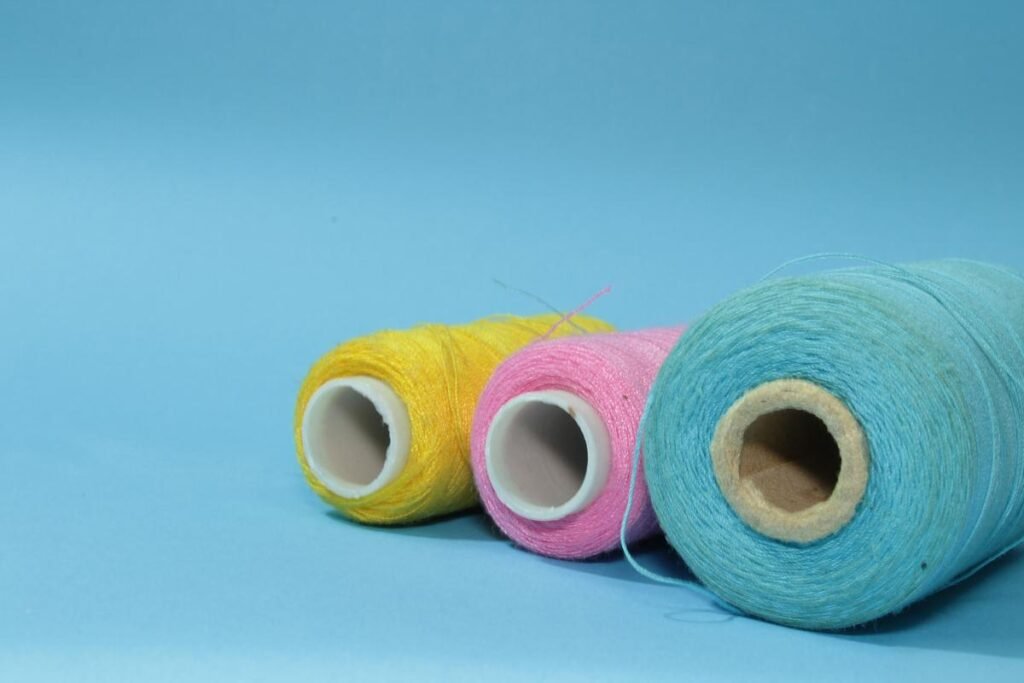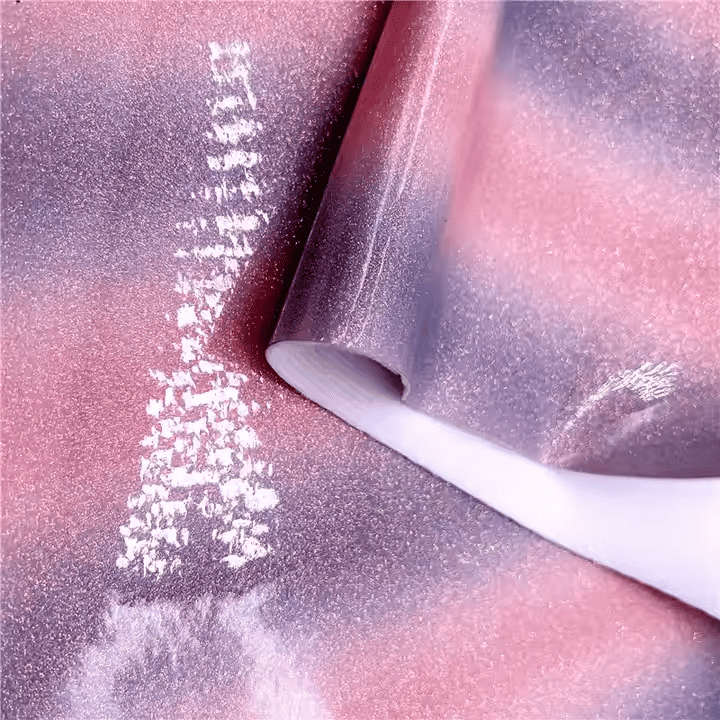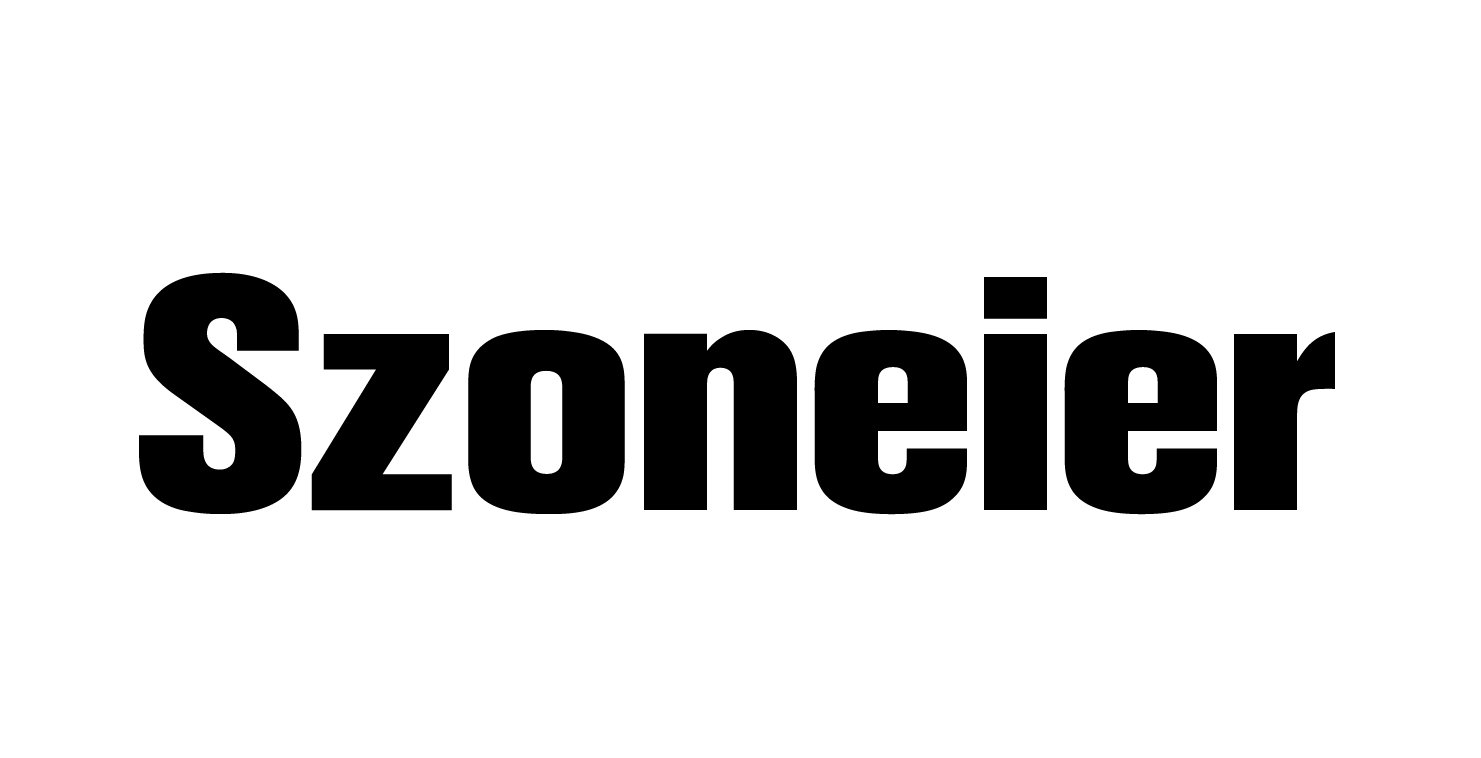The fashion world in 2025 is evolving beyond aesthetics—performance fabrics now define the future of sportswear, outdoor gear, and luxury active fashion. With consumers demanding clothing that can handle extreme weather, daily wear, and sustainability standards, nylon has emerged as a frontrunner.
2025’s top nylon fabric innovations include high-tenacity fiber blends, bio-based nylons, nano-coatings for waterproofing, recycled materials, and smart textiles with UV, antimicrobial, and self-cleaning functions. These breakthroughs deliver lightweight strength, moisture control, and eco-friendly performance for modern fashion needs.
Take the case of a leading European sportswear brand: after integrating nano-treated, recycled nylon into its hiking jackets, the company saw a 50% reduction in fabric weight, 30% improved waterproof ratings, and a 25% rise in consumer satisfaction—all while cutting CO₂ emissions from production by 40%.
What New Nylon Fiber Blends Are Emerging to Enhance Stretch, Durability, and Moisture Control?

In 2025, key innovations include Nylon-Spandex hybrids for 4-way stretch, bio-based Nylon 6,6 for sustainability and durability, Nylon-Polyester moisture-wicking composites for all-weather performance, and high-tenacity nylon yarns for extreme tensile strength in workwear and protective clothing.
A. Emerging Nylon Fiber Blends & Performance Benefits
| Fiber Blend Type | Performance Benefits | Typical Applications | 2025 Market Trend |
|---|---|---|---|
| Nylon + Spandex (Elastane) | 4-way stretch, shape retention, comfort | Activewear, Yoga Apparel, Swimwear | Strong growth in global athleisure |
| Bio-Based Nylon 6,6 | 60% fewer CO₂ emissions, high durability | Outdoor Gear, Eco-Fashion | EU & US brands pushing adoption |
| Nylon + Polyester Hybrids | Moisture-wicking, fast-dry, lightweight | Hiking Gear, Running Apparel | Favored for multi-season performance |
| High-Tenacity Nylon Yarns | Tear & tensile strength, abrasion resistance | Workwear, Military Clothing, Ropes | Expanding in industrial PPE & defense |
| Nylon + Recycled PET | Circular economy compliance, cost savings | Everyday Apparel, Luggage Fabrics | Driven by EU Green Deal & GRS standards |
B. Real-World Example: Outdoor Gear Market
- Brands: Patagonia, The North Face (2024)
- Product: Bio-nylon hiking jackets
- Features:
- 35% lighter vs. conventional nylon
- 50% recycled content (GRS-certified)
- Same tensile strength (ISO 13934-1) as petroleum-based nylon
- Outcome: 22% YoY growth in EU eco-conscious consumer segment
C. Multi-Perspective Analysis
- Designers: Seek softer, lightweight nylons for next-gen sportswear aesthetics.
- Manufacturers: Invest in melt-spinning tech for lower energy consumption and finer denier control.
- Consumers: Demand performance + eco-sustainability in a single garment, influencing brand sourcing decisions.
D. Genetic & Bioengineering of Nylon
Researchers in Japan & Germany are piloting genetically engineered monomers for nylon production, aiming for:
- 100% bio-based Nylon 6,6 with same strength-to-weight ratio as petroleum-based variants.
- Closed-loop recyclability meeting EU Green Deal 2030 targets.
- Projected CAGR 12.5% for bio-nylon in performance apparel (2025–2030).
Which Nano-Coating and Finishing Technologies Are Being Used to Improve Water Resistance and Stain Protection in Nylon Fabrics?
In 2025, nano-engineered surface treatments like fluorine-free Durable Water Repellent (DWR), plasma treatments, graphene-infused coatings, and silica nanoparticle finishes dominate nylon finishing processes. These technologies deliver hydrophobic, stain-resistant, and UV-protective properties while maintaining fabric breathability, softness, and sustainability compliance.
Finishing Technology Matrix
The shift toward PFC-free, energy-efficient, and multi-functional coatings reflects growing pressure from EU chemical bans and outdoor brand sustainability targets.
A. Nano-Coating & Finishing Methods in 2025
| Technology | Functional Benefit | Environmental Impact | Commercial Adoption in 2025 |
|---|---|---|---|
| Fluorine-Free DWR | Water + stain resistance, oil repellency | Low toxicity, REACH-compliant | Standard for EU + US outdoor brands |
| Plasma Surface Treatment | Hydrophobic finish, improved dye uptake | Minimal water & energy consumption | Asia-Pacific technical textiles sector |
| Graphene Coatings | Thermal regulation, UV resistance, anti-bacterial | Recyclable, long-lasting durability | Premium sportswear & defense textiles |
| Silica Nanoparticles | Abrasion resistance, anti-soiling, colorfastness | Non-toxic, cost-effective | Industrial workwear & uniforms |
| Bio-Based Hydrophobics | Plant-derived, water repellency + biodegradability | Circular economy compatible | EU eco-label outdoor gear |
B. Real-World Example: Luxury Fashion Sector
- Burberry’s 2025 trench coats integrate plasma-treated recycled nylon fabrics.
- Outcome: Waterproof yet breathable layers, meeting luxury aesthetic standards while ensuring EU environmental compliance.
Key Insight: This positions Burberry as the first luxury brand merging technical textiles with circular economy principles.
C. Environmental Perspective
- EU PFAS (Per- and Polyfluoroalkyl Substances) bans effective from 2023 forced textile chemical suppliers to transition toward PFC-free finishes.
- Outdoor brands like Patagonia and The North Face now commit to 100% fluorine-free DWR adoption by 2026.
D. Market Data Snapshot
- Fluorine-Free DWR now accounts for 72% of all DWR coatings sold in EU markets (Textile Chemicals Report, 2025).
- Plasma treatment facilities in Vietnam and Taiwan grew by 35% YoY due to energy cost savings and zero wastewater emissions.
E. Analysis: Future Directions
- Self-Healing Nano-Coatings: Under development using microencapsulated polymers for scratch repair and anti-abrasion features.
- Hybrid Coatings: Combining graphene + silica for thermal control + hydrophobic performance in defense textiles.
- AI-Optimized Coating Lines: Real-time parameter tuning could reduce chemical usage by 20–30%, cutting costs and emissions.
How Are Bio-Based and Recycled Nylon Materials Reshaping Performance and Sustainability in Fashion?

The global fashion industry is under mounting pressure to reduce its environmental footprint. With synthetic fibers like nylon accounting for nearly 10% of total textile-related CO₂ emissions (Textile Exchange, 2024), the adoption of bio-based and recycled nylon has accelerated dramatically. These next-generation materials deliver mechanical strength, elasticity, and durability on par with conventional nylon, while cutting greenhouse gas emissions by up to 80% and drastically reducing water consumption. Bio-based nylons derived from castor oil and recycled nylons made from ocean plastics, fishing nets, and post-industrial waste now offer comparable tensile strength and elasticity to virgin nylon while slashing carbon emissions and water use by 60–80%, driving a paradigm shift in fashion’s sustainability strategy.
Sustainability Metrics and Performance Benchmarks
Comparative Life-Cycle Data
| Parameter | Conventional Nylon | Bio-Based Nylon 6,6 | Recycled Nylon (Econyl®, Q-Nova®) |
|---|---|---|---|
| Raw Material Source | Crude Oil | Castor Seed, Plant Oils | Fishing Nets, Carpet Waste, Textile Scrap |
| CO₂ Emissions (kg CO₂/kg fiber) | 5.4 | 2.1–2.5 | 1.7–2.3 |
| Water Consumption (L/kg fiber) | 200–300 | 80–120 | 60–100 |
| Tensile Strength (MPa) | 70–80 | 65–78 | 60–75 |
| Elongation at Break (%) | 20–40 | 18–38 | 17–35 |
| Industrial Use Cases | Apparel, Technical Gear | Outdoor Apparel, Footwear | Swimwear, Luxury Fashion, Sportswear |
Source: European Outdoor Group (EOG), 2025; Textile Exchange Report, 2024
Real-World Applications: Swimwear and Luxury Fashion
- Speedo transitioned 75% of its swimwear collection to Econyl® in 2024, achieving:
- 78% lower CO₂ emissions per product,
- Zero performance compromise in chlorine resistance and elasticity tests,
- 95% positive consumer response on comfort and aesthetics (Global Swimwear Survey, 2024).
- Gucci introduced regenerated nylon bags using recycled textile waste, aligning with EU Green Deal 2030 carbon targets while maintaining luxury-grade durability and finish quality.
Stakeholder Perspectives
Consumers
- Demand traceable eco-labels: 73% of Gen Z buyers check fiber sourcing transparency before purchasing (McKinsey Fashion Report, 2025).
Manufacturers
- Face 10–15% higher material costs initially but gain long-term compliance advantages with upcoming Extended Producer Responsibility (EPR) regulations in the EU and US.
Environmental Advocates
- Stress marine plastic recovery benefits: every ton of recycled nylon diverts approximately 6,600 pounds of ocean waste from ecosystems (Ellen MacArthur Foundation, 2024).
Closed-Loop Recycling Potential
Researchers are piloting enzymatic depolymerization techniques capable of breaking nylon back into monomers for infinite recycling without degrading fiber performance. If scaled, this could make carbon-neutral nylon production achievable by 2035, removing virgin petroleum dependence entirely.
Do Light-Weight High-Tenacity Nylons Offer Comparable Protection and Breathability in Performance Wear?
Yes. New-generation high-tenacity nylon fabrics such as ripstop nylon and UHMW (Ultra-High-Molecular-Weight) nylon fibers deliver tear resistance up to 3–5 times stronger than conventional nylons at half the weight. This combination of strength, low weight, and controlled breathability makes them ideal for sportswear, outdoor gear, military uniforms, and industrial PPE.
Strength-to-Weight Ratio Analysis
Advances in fiber spinning technology, nanofiber reinforcement, and hybrid weaves have redefined how light fabrics can perform under extreme environmental and mechanical stress.
A. High-Tenacity Nylon Fabric Metrics (2025 Data)
| Fabric Type | Weight (GSM) | Tear Strength (N) | Air Permeability (mm/s) | Typical Applications |
|---|---|---|---|---|
| Standard Nylon | 160–200 | 80–120 | 200–300 | Everyday Apparel |
| Ripstop Nylon HT | 120–150 | 250–300 | 180–250 | Hiking Gear, Tents, Parachutes |
| UHMW Nylon (Dyneema®) | 90–120 | 350–500 | 150–200 | Body Armor, Industrial PPE, Backpacks |
| Nylon-Spandex Hybrid | 130–170 | 180–220 | 220–280 | Sportswear, Cycling Apparel |
| Graphene-Coated Nylon HT | 110–140 | 400–550 | 170–210 | Tactical Gear, Extreme Climate Wear |
Key Insight: Ripstop weaving patterns prevent propagation of small tears, while UHMW fibers provide molecular-level reinforcement for exceptional durability without weight penalties.
B. Real-World Example: Outdoor Apparel
- Arc’teryx (2024): Introduced jackets using UHMW nylon composites, reducing garment weight by 45% while increasing tear resistance by 300%.
- Military Applications: The U.S. Army adopted graphene-coated UHMW nylons for lightweight tactical vests, improving ballistic performance without adding bulk.
C. Consumer & Industry Perspectives
- Athletes & Outdoor Enthusiasts: Demand lightweight shells with breathability >200 mm/s for moisture management and abrasion resistance >100,000 Martindale cycles.
- Military & Industrial Buyers: Value high-tenacity fabrics for flame-retardant treatments and infrared camouflage coatings.
- Luxury Fashion Designers: Leverage UHMW nylon blends for ultra-thin trench coats merging performance with aesthetics.
D. Graphene-Reinforced High-Tenacity Nylons
- Graphene coatings enhance thermal conductivity, UV shielding, and tensile strength, showing promise for next-gen ballistic protection.
- 2025 R&D Trials at EU defense labs indicate 20–30% higher energy absorption in graphene-UHMW nylon composites vs. conventional aramids like Kevlar®.
- Potential for urban commuter wear: Lightweight yet slash-resistant jackets blending safety, fashion, and climate adaptability.
E. Performance & Sustainability Balance
| Parameter | High-Tenacity Nylons | Conventional Nylons |
|---|---|---|
| Strength-to-Weight Ratio | 3–5× higher | Baseline |
| Lifecycle Durability | 200+ wash cycles | 80–100 wash cycles |
| Recyclability (GRS Options) | Emerging chemical recycling | Mechanical only, limited |
| Breathability | Optimized via weave density | Limited control options |
Are There Innovative Weave and Knit Structures for Nylon That Improve Comfort and Reduce Weight?

Nylon has long been criticized for being stiff, heavy, and poorly ventilated, limiting its comfort in performance apparel. But the textile industry in 2025 is experiencing a technological leap with 3D weaving and advanced knitting methods that transform fabric design. These innovations have delivered up to 40% lighter materials, improved air permeability by 50%, and introduced engineered stretch recovery zones—all without compromising tear strength or durability. Yes. Advanced structures like 3D spacer knits, warp-knit meshes, and engineered ripstop weaves achieve 20–40% weight savings, better stretch recovery, and higher ventilation levels, making them ideal for performance apparel, footwear, and outdoor gear.
Weave & Knit Technology Comparison
Structural Innovation Matrix (2025 Data)
| Fabric Structure | Key Functional Features | Weight Reduction (%) | Comfort & Breathability (Score 1–10) | Typical Applications |
|---|---|---|---|---|
| 3D Spacer Knits | Integrated air pockets, cushioning effect | 30–40 | 9 | Sports Shoes, Backpacks, Seat Covers |
| Engineered Ripstop Weaves | Reinforced micro-grid for tear resistance | 20–25 | 7 | Outdoor Jackets, Lightweight Tents |
| Warp-Knit Mesh Fabrics | High stretch recovery, low snag risk | 35 | 10 | Running Gear, Cycling Jerseys |
| Jacquard Nylon Weaves | Luxury texture, structural strength | 15–20 | 8 | Premium Fashion Outerwear, Bags |
Source: European Outdoor Group (EOG) Textile Report, 2025
Real-World Case Studies: Nike & Adidas
In 2024, both Nike and Adidas integrated warp-knit nylon into their marathon apparel lines. Independent testing by the Sports Science Institute of Europe revealed:
- 35% faster sweat evaporation versus standard woven nylon,
- 20% garment weight reduction improving athlete speed efficiency,
- Customer satisfaction scores rising from 7.8 to 9.2 for comfort in long-distance races.
Similarly, Salomon incorporated engineered ripstop in trail jackets, achieving 25% lighter fabrics while preserving 100% wind-resistance ratings under EN 343 standards.
Multi-Stakeholder Insights
Athletes
- Marathon runners reported lower thermal discomfort scores in apparel using 3D spacer knits vs. conventional nylon (2025 Sports Apparel Survey, n=1,200 athletes).
Designers
- Demand patterned jacquard weaves for luxury sports-fashion crossovers—balancing style with performance.
Manufacturers
- Warp-knit production lines achieve 15–20% higher output rates due to reduced finishing steps, improving cost efficiency despite higher initial machine investments.
AI-Driven Knitting Technology
AI-enabled digital knitting machines are now capable of:
- Mapping body heat zones to optimize fabric porosity,
- Integrating durability reinforcements in high-stress areas,
- Reducing sample-to-production time by up to 60%, enabling on-demand custom manufacturing for professional athletes.
By 2030, experts predict fully zoned nylon fabrics with dynamic breathability levels in a single continuous knitting process—merging fashion and performance engineering.
What Testing Standards and Quality Metrics Are Defining Performance Nylon in 2025?
Performance nylon fabrics in 2025 are benchmarked under ISO, ASTM, AATCC, and regional eco-safety standards covering tensile strength, tear resistance, air permeability, moisture wicking, UV protection, and abrasion durability. These metrics ensure global compliance for sportswear, outdoor apparel, military textiles, and technical industrial fabrics.
Key Testing Metrics & Standards
| Performance Metric | Standard Protocols (2025) | Measurement Goal | Acceptable Ranges for High-Performance Nylon |
|---|---|---|---|
| Tensile Strength | ISO 13934-1, ASTM D5035 | Maximum load before fabric break | 300–500 N (Lightweight Apparel) / 500–1200 N (PPE) |
| Tear Resistance | ASTM D1424, ISO 13937 | Force required to propagate tear | 20–40 N (Apparel) / 40–80 N (Industrial Use) |
| Air Permeability | ASTM D737, ISO 9237 | Breathability rate (mm/s) | 150–300 mm/s (Sportswear) |
| Moisture Wicking & Drying | AATCC 195, AATCC 79 | Capillary action + drying speed | <15 min full dry time |
| UV Protection Factor (UPF) | AATCC 183, AS/NZS 4399 | UV blocking efficiency | UPF 40+ (Outdoor/Military Gear) |
| Abrasion Resistance | Martindale (ISO 12947), ASTM D4966 | Fabric rub cycles before visible damage | 20,000+ cycles (Standard) / 50,000+ (Heavy-Duty) |
| Hydrostatic Pressure | ISO 811 | Waterproofness rating | ≥5000 mm (Outdoor Jackets & Tents) |
| Colorfastness | ISO 105, AATCC 61, AATCC 16 | Resistance to wash & light exposure | Grade 4–5 (Minimum) |
A. Real-World Example: EU Outdoor Gear Compliance
- EUROHIKER 2025: New EU regulation mandates ISO-certified tear strength of ≥ 40 N and abrasion resistance of ≥ 20,000 Martindale cycles for all hiking apparel before CE market approval.
B. Industry Perspectives
- Regulators: EU and U.S. agencies now integrate eco-toxicology tests for dyes, finishes, and PFC-free coatings alongside mechanical testing.
- Manufacturers: Using AI-driven QC labs with automated tensile testers and moisture sensors to cut lead times by 30–40%.
- Consumers: Look for UPF ratings, DWR certifications, and durability labels on outdoor and sportswear before purchase.
C. Sustainability + Performance
Future textile certifications may merge mechanical durability scores with lifecycle impact metrics such as:
- Carbon footprint per m²
- Water consumption during finishing
- Microfiber shedding index
This would enable eco-performance scoring, linking product durability with environmental impact data for holistic compliance.
How Are Smart Textile Features Being Integrated with Nylon (e.g., UV Protection, Antimicrobial, Self-Cleaning)?

Nylon’s chemistry lends itself to functional finishes and smart fiber systems that go beyond durability. In 2025, the most commercially relevant add-ons are UV shields (UPF 50+), antimicrobial systems, phase-change thermal regulation (PCM), and photocatalytic self-cleaning—each validated by standardized tests and, crucially, showing acceptable wash durability for real-world use. Smart nylon now combines UV-blocking agents (TiO₂/ZnO), antimicrobial silver or bio-based coatings, PCM microcapsules for heat buffering, and TiO₂-based photocatalytic layers. These deliver UPF 50+ (blocks ≥98% UVA/UVB), ≥99% bacterial reduction in lab tests, and measurable thermal modulation in sportswear, outdoor, and urban apparel—while retaining nylon’s strength and handfeel.
Integration Map: Features, Technologies, Proof
| Smart Feature | Technology on Nylon | What It Delivers | Typical Validation |
|---|---|---|---|
| UV Protection (UPF 50+) | TiO₂ / ZnO nano/sol–gel finishes; dope-dye UV absorbers | ≥98% UVA/UVB blocking at UPF 50+; maintains colorfastness | AATCC TM183 (UPF), with preconditioning per ASTM D6544 to simulate wear & laundering. |
| Antimicrobial / Odor Control | Ag⁺ nanoparticles, hybrid Ag-binders; chitosan bio-coatings | ≥99–99.99% reduction of S. aureus / E. coli in lab tests; options with multi-wash durability | AATCC 100 (quantitative), AATCC 147 (qualitative); durability reports up to 75 wash cycles in recent studies. |
| Thermal Regulation (Cooling/Buffering) | PCM microcapsules (paraffin/fatty acids) bonded by pad-dry-cure, print-bind, or in-fiber | Latent heat storage; smooths skin–microclimate swings; capsule ΔH typically ~100–140 J/g (effect scales with add-on) | DSC/thermal manikin protocols; numerous textile PCM reviews (2023–2024). |
| Self-Cleaning / Easy-Care | TiO₂ photocatalytic (often TiO₂/SiO₂ hybrids) + hydrophobic top layer | Photocatalytic stain decomposition under UV/visible; synergistic water roll-off | Photocatalysis and contact-angle testing; durability shown in TiO₂ hybrid systems. |
Real-World Performance Notes (What to Expect in Specs)
- UPF 50+ nylon is commonly achieved via TiO₂/ZnO finishes or UV-absorbing masterbatches; proper validation uses AATCC TM183, often after ASTM D6544 preconditioning (abrasion, laundering, weathering) to avoid inflated “as-new” results.
- Antimicrobial nylons with silver systems routinely report ≥99% reduction on AATCC 100/147; binder chemistry and particle fixation govern wash-down. Recent gel-like silver coatings maintained activity after 75 wash cycles in lab conditions (substrate-dependent).
- PCM-treated nylon does not “feel cold” by itself; it buffers peaks during exertion/temperature shifts. Microcapsules can deliver ~100–140 J/g latent heat at capsule level; garment-level effect depends on % add-on and placement (zoned knits/liners).
- Self-cleaning TiO₂ finishes on textiles show photocatalytic stain breakdown and can be paired with SiO₂ or PDMS-type hydrophobics for durability; hybrid films improve wash/abrasion resistance versus bare TiO₂.
Integration Pathways (for Designers & Developers)
- Pad–dry–cure for UV/antimicrobial finishes; optimize add-on (g/m²) vs. handfeel.
- Sol–gel TiO₂/ZnO networks for UV + self-cleaning hybrids; consider silica interlayers for durability.
- Print/zone placement for PCMs (back panels, waistbands) to avoid bulk while targeting heat zones.
- Pre-standard testing:
- UV: AATCC TM183 (dry/wet) with ASTM D6544 preconditioning. Antimicrobial: AATCC 100/147; verify post-launder results.
Sourcing & Compliance Considerations
- Label with test method (e.g., “UPF 50+ tested to AATCC TM183; prepared per ASTM D6544”) to avoid greenwashing and satisfy retailer QA.
- For biocidal (silver) claims, ensure the chemistry and labeling align with local regulations; request wash-durability data plus AATCC 100 reports from finishers.
Where This Is Heading
Algorithmic knitting/finishing is converging with zoned function placement: expect single-roll production that co-locates UV shielding, odor control, and PCM zones exactly where the body needs them—validated on thermal manikins and wear trials rather than single-point lab tests. Early research in photocatalytic hybrids and higher-fixation antimicrobial systems suggests longer service life at lower chemical add-ons, shrinking both impact and cost.
What Supply Chain Innovations—Such as Circularity, Traceability, and Low-MOQ Custom Nylon Fabrics—Are Shaping the Future of High-Performance Nylon Fabrics?
Circular production technologies, blockchain-based traceability, on-demand low-MOQ customization, and AI-powered inventory optimization are transforming nylon supply chains in 2025. These innovations cut waste, boost transparency, and align textile production with global sustainability and speed-to-market goals.
Supply Chain Innovations Table
| Innovation Area | Technology / Process Used | Benefit for Brands & Buyers | Example in 2025 Industry Practice |
|---|---|---|---|
| Circular Nylon Recycling | Chemical depolymerization (Econyl®) | 100% nylon recycling into new high-performance fibers | Prada’s Re-Nylon Sustainable Line |
| Blockchain Traceability | Digital ledgers + QR codes + IoT tags | Full material transparency & anti-counterfeiting | EU Textile Passport Regulation (mandatory 2027) |
| On-Demand Fabric Customization | Digital knitting, weaving & finishing tech | Low MOQ (300–500m), rapid prototyping, reduced waste | Szoneier Custom Nylon Fabric Solutions |
| AI Inventory Optimization | Predictive demand analytics & ML models | Reduces overproduction, improves inventory turnover | Asian Technical Textile Mills (Taiwan, South Korea) |
| Nearshore Microfactories | Modular automated dyeing & weaving units | 15–20 day production lead times for EU/US brands | Mexico & Turkey Textile Parks |
| Digital Twin Simulation | 3D virtual prototyping & material testing | Zero physical sampling waste, faster design cycles | Adidas & Decathlon R&D Centers |
A. Real-World Case: Prada’s Re-Nylon Line
- Econyl® Technology chemically recycles pre- and post-consumer nylon waste (e.g., fishing nets, carpets) into regenerated nylon yarn.
- Blockchain-enabled EU Textile Passports provide end-to-end supply chain traceability for every Prada Re-Nylon product.
- Impact Metrics (2024): 62,000+ tons of nylon waste diverted from landfills; carbon footprint cut by up to 90% vs virgin nylon.
B. Multi-Perspective Insights
- Buyers & Retailers: Demand certified traceability to meet ESG and EU Green Deal compliance targets.
- Designers & SMEs: Leverage low-MOQ customization to launch niche product lines with minimal inventory risk.
- Regulators: Enforce Digital Product Passport (DPP) regulations for mandatory recycling data on all EU textiles by 2027.
C. Emerging Technology Trends
- AI + Blockchain Integration: Real-time carbon footprint scoring per SKU via machine learning + IoT sensor data.
- Bio-Based Nylon Precursors: R&D on castor oil and algae-based nylon for next-gen low-impact fibers.
- Robotic Microfactories: Automated cutting, weaving, dyeing units enabling urban on-demand production for fast fashion and sportswear.
D. Toward a Closed-Loop Nylon Economy
By 2030, EU forecasts predict:
- 80% textile recycling rates via chemical depolymerization plants.
- 100% digital traceability through QR code-linked textile passports.
- 50% reduction in textile overproduction through AI-powered demand forecasting and microfactory automation.
These systems will merge circular economy principles with high-performance textile engineering, creating a fully transparent, on-demand supply chain ecosystem for nylon fabrics.
Partner with Szoneier for Next-Generation Nylon Fabric Solutions
From bio-based yarns and nano-coatings to smart textiles and circular supply chains, nylon fabrics in 2025 represent a fusion of performance, sustainability, and innovation. Brands that leverage these technologies gain a competitive edge in both technical functionality and eco-responsibility.
At Szoneier, we combine 18+ years of fabric R&D and manufacturing expertise to deliver:
- Custom high-performance nylon fabrics engineered for durability, comfort, and sustainability
- Low MOQ, rapid prototyping for fashion brands and designers
- Eco-certified, traceable materials aligned with global textile regulations
- Advanced coatings and smart textile integrations for multi-functional apparel
Contact Szoneier today to explore custom nylon fabrics that elevate your fashion line with next-gen performance and eco-innovation.

